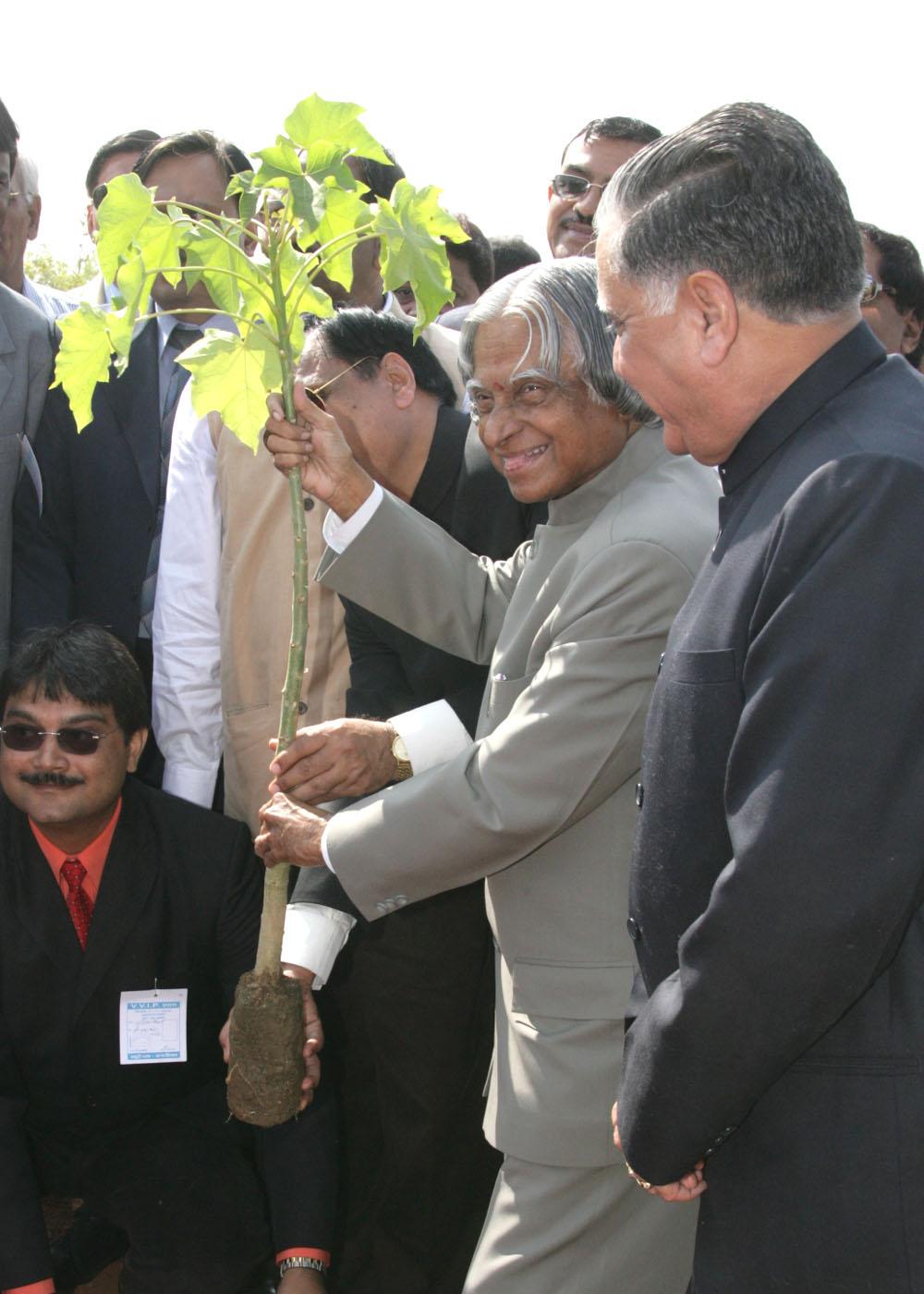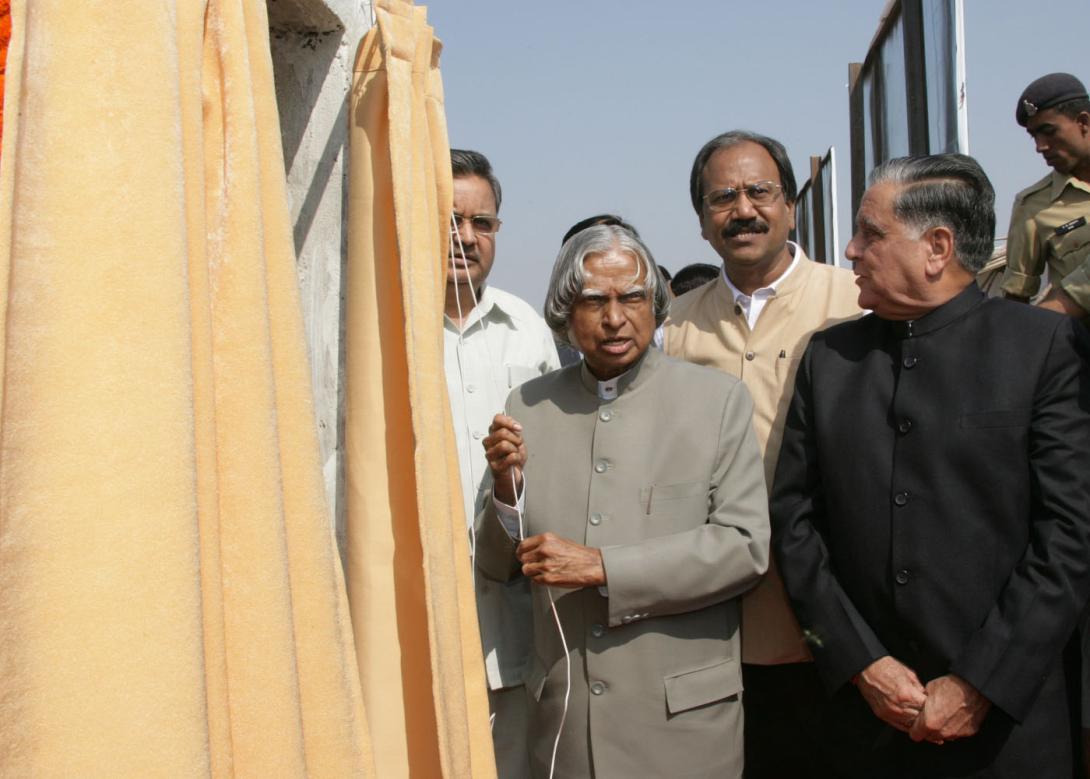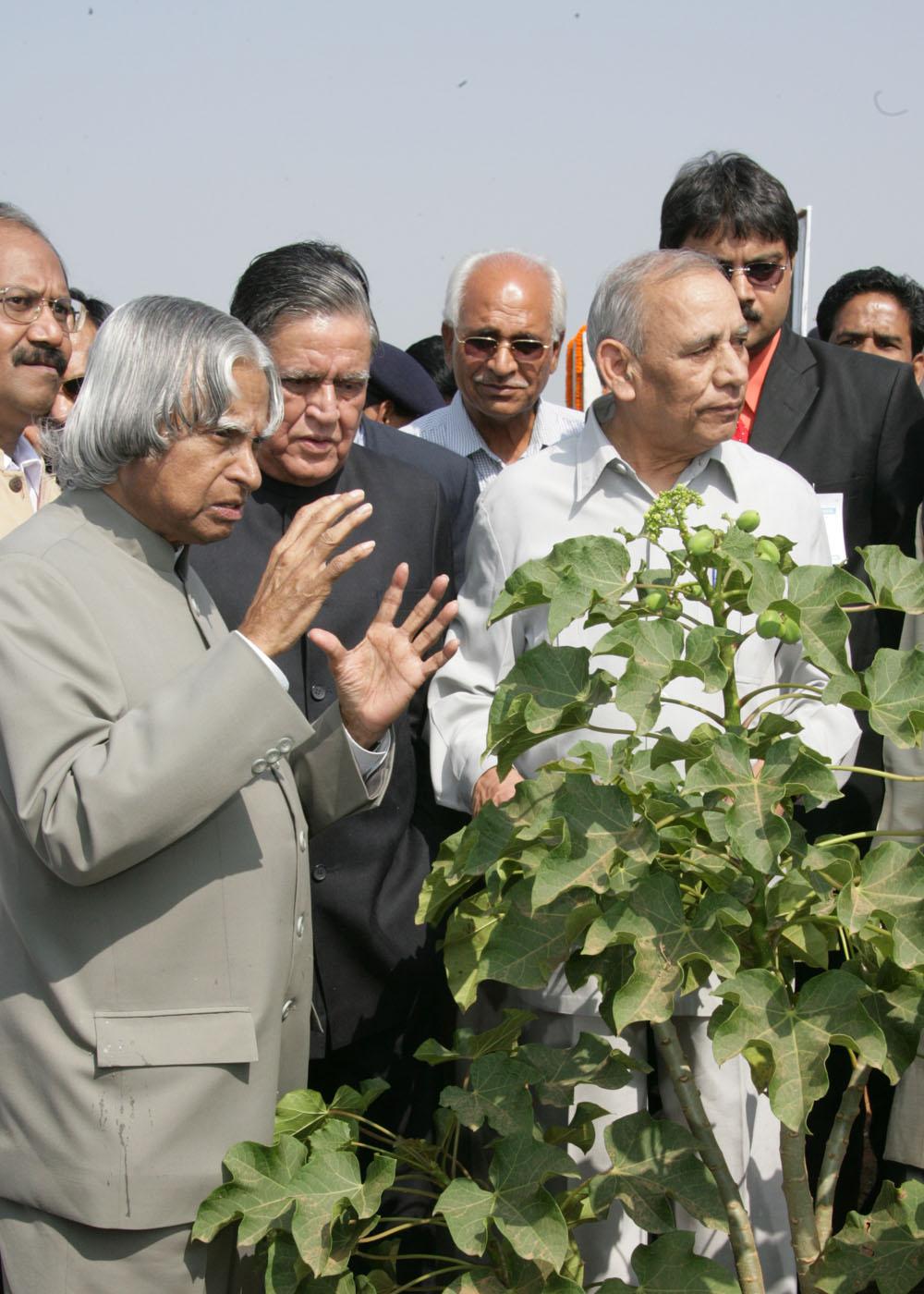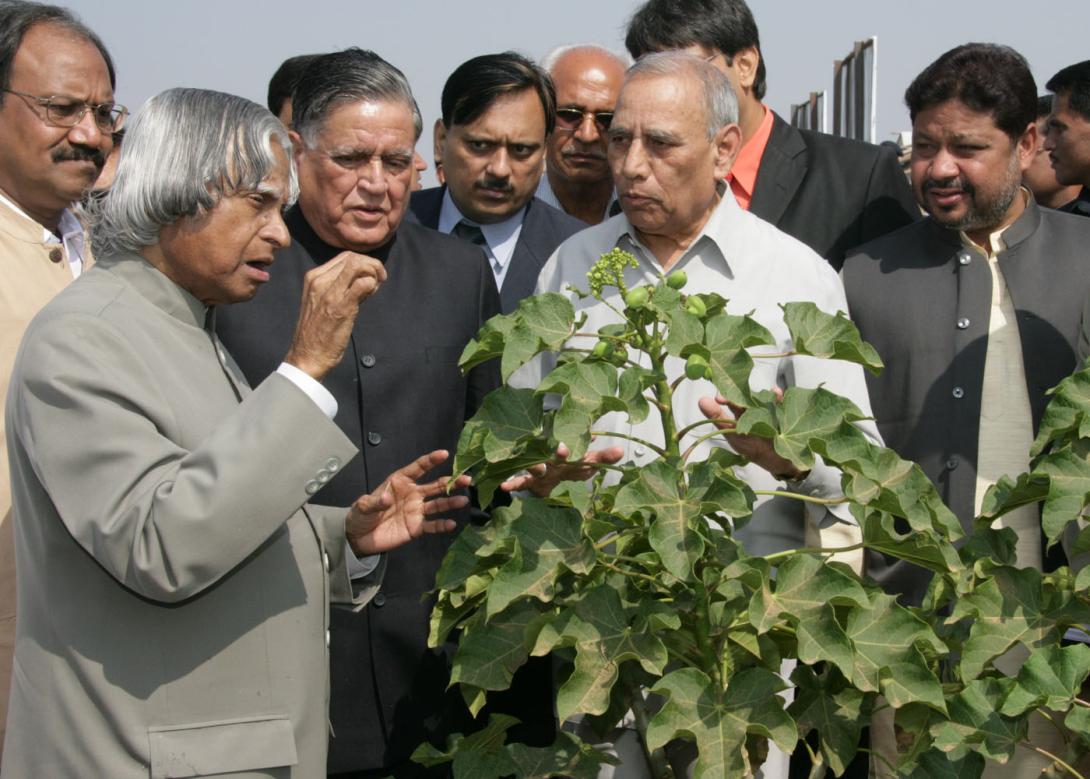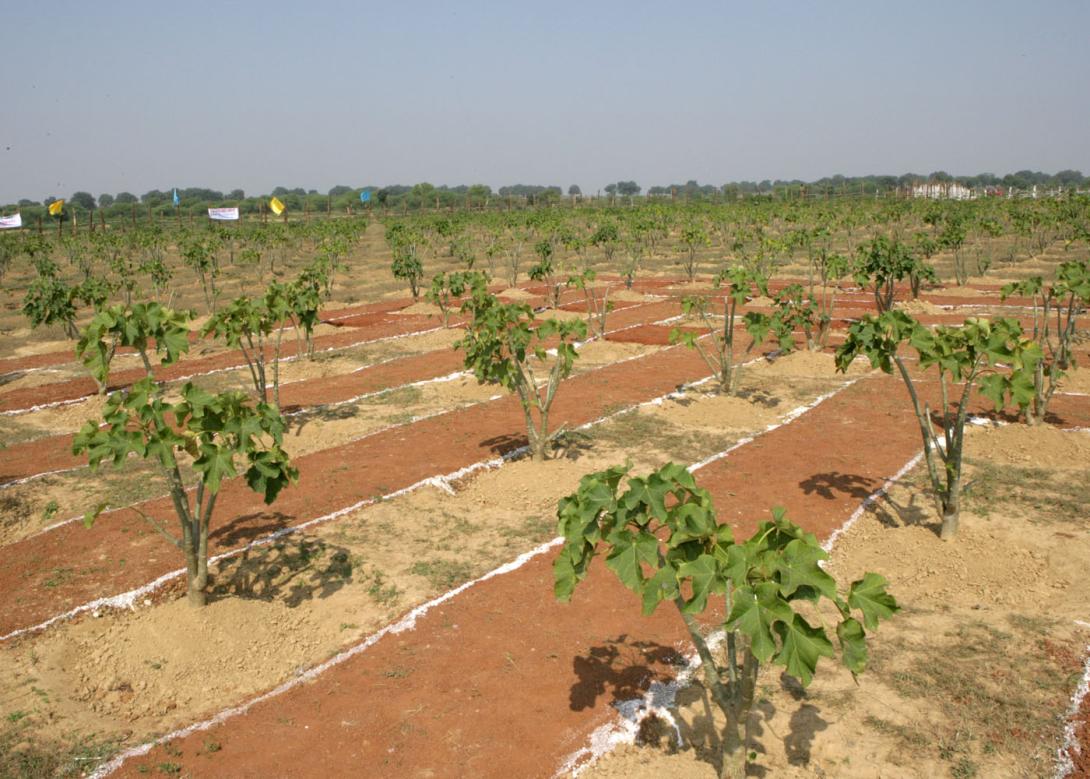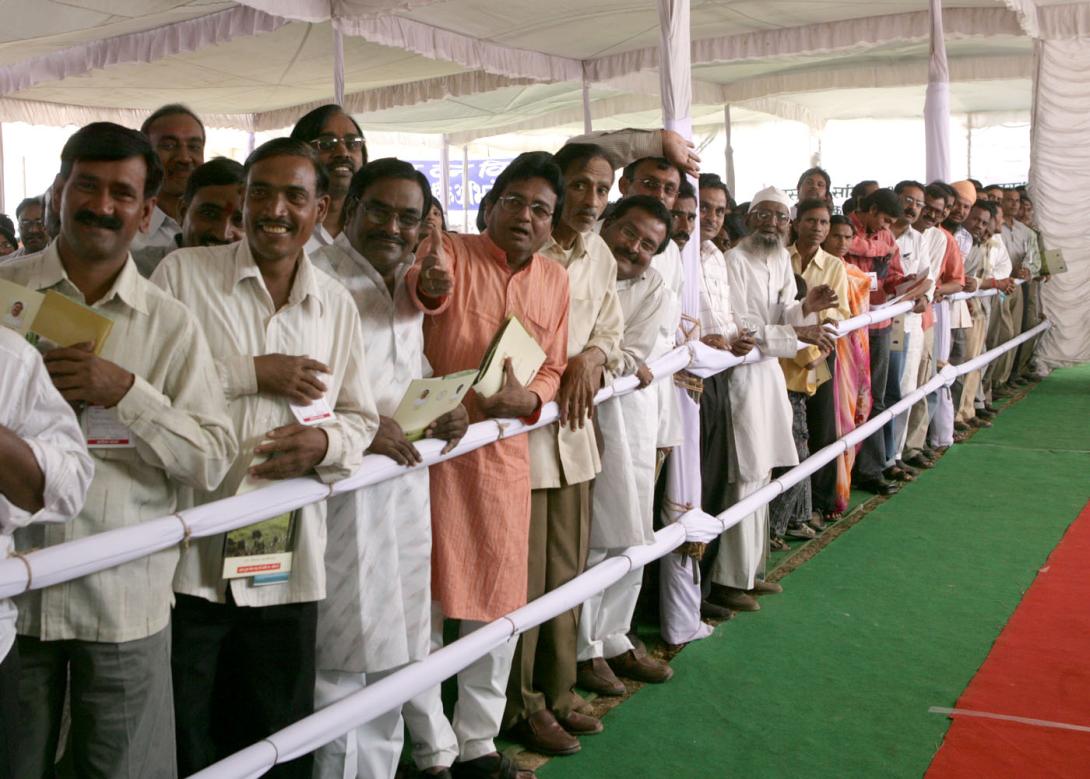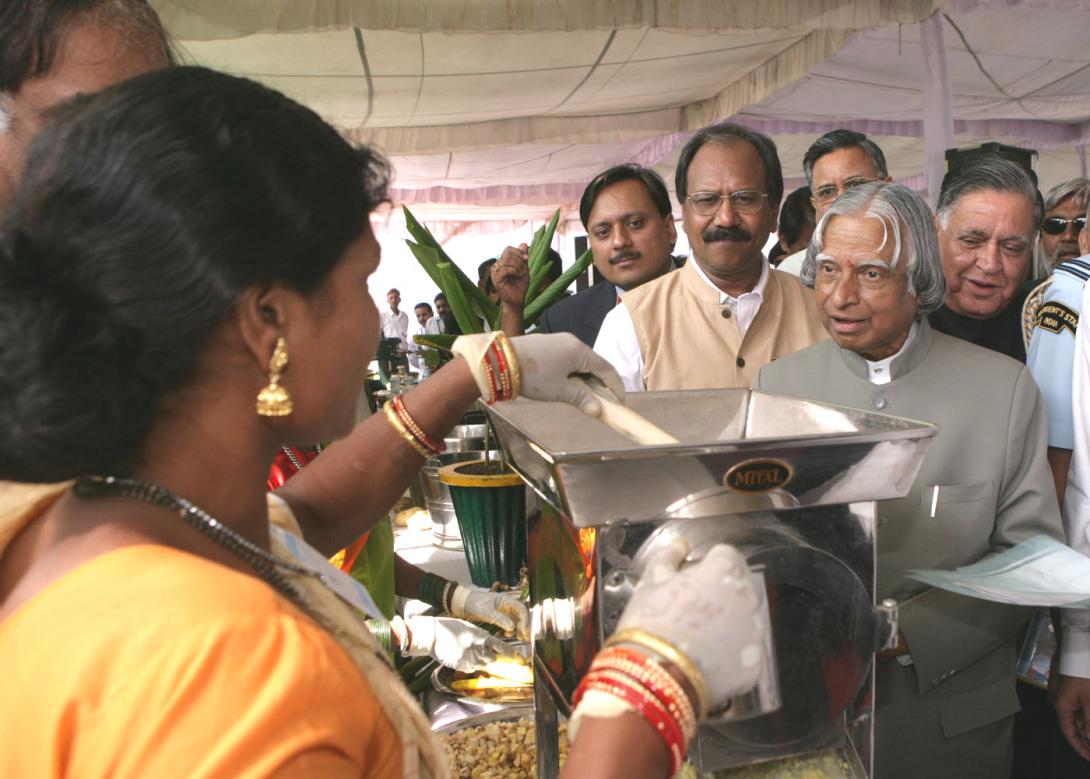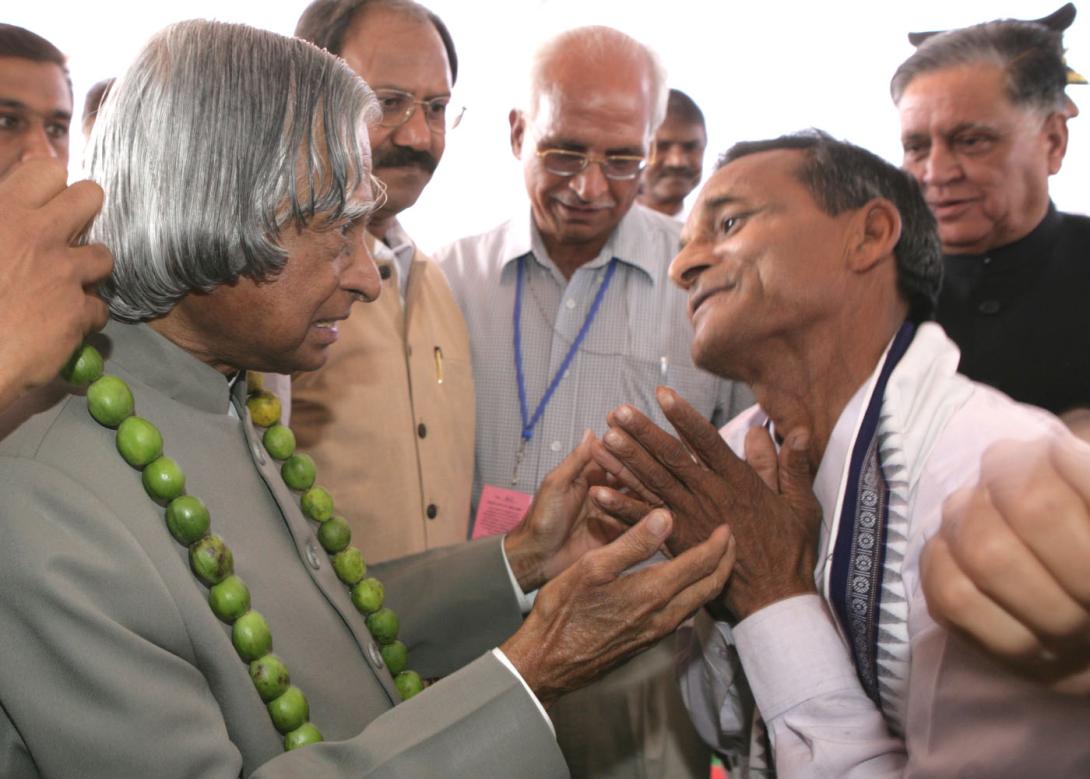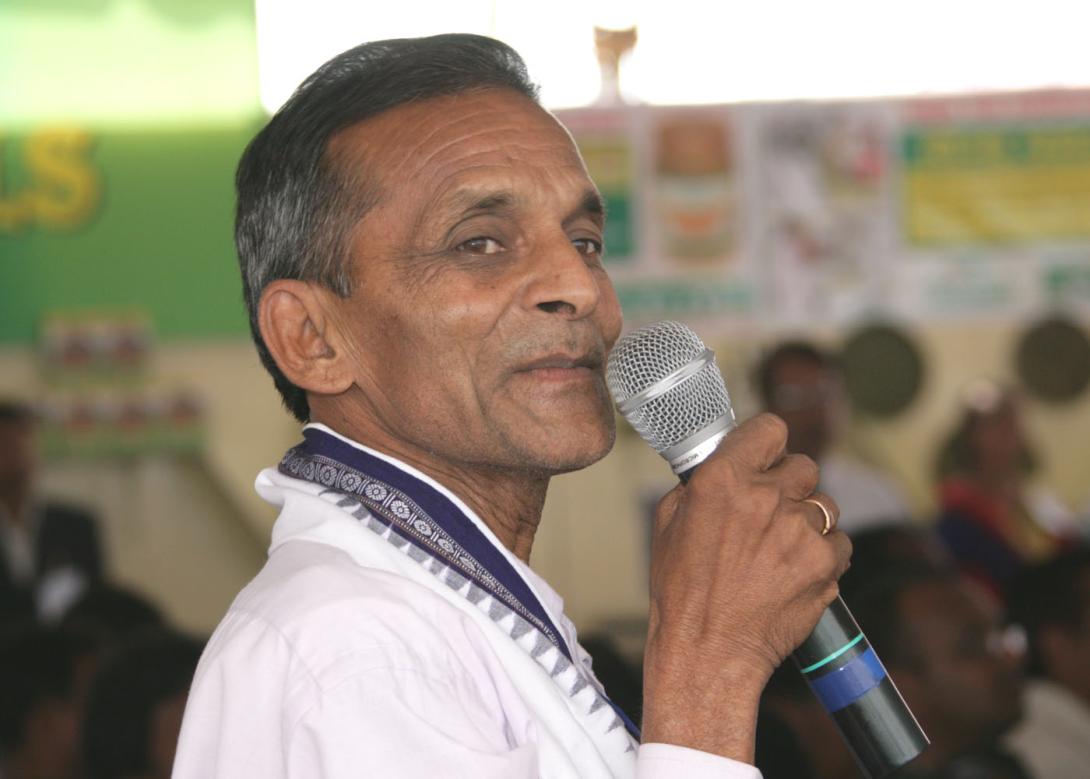Visit to Jatropha Plantation at Sunderkera, Chhattisgarh
Chhattisgarh : 07-11-2006
Leadership in Bio-diesel
Prosperity of Villages leads to
Economic prosperity of the nation.
I am delighted to visit the Jatropha Plantation in Sunderkera. I am happy to know that 100 acres has been covered for Jatropha plantation in this village for biodiesel production. You are all aware that Jatropha plantation provides not only biodiesel but other products such as manure for the crops, methane for power generation and glycerol for industrial use besides, enormous advantage of carbon trading. Apart from already planting Jatropha in over 88,000 hectares (22 Crore saplings), I find that Chhattisgarh has taken a lead in working towards Jatropha cultivation in one million hectares of fallow land by 2012. This gives me a confidence that our plan for realizing 60 million tons of biodiesel by 2030 will definitely be achieved in an integrated way by many states in the country. I would like to discuss on the topic "Leadership in Bio-diesel".
Standard Jatropha Seed to Bio-diesel Production
While I am with you, I would like to present the salient features of discussions and recommendations of the workshop we had on Bio-diesel towards Energy Independence with focus on Jatropha at Rashtrapati Nilayam, Hyderabad on 9th and 10th June 2006. More than 105 specialists including 25 farmers from 10 States participated in this Conference. Dr.D.N.Tiwari, Vice Chairman, State Planning Board of Chhattisgarh, and a number of specialists and farmers from Chhattisgarh also participated in the conference.
The potential of Jatropha for Bio-diesel production were discussed. Several presentations were made on status of Jatropha cultivation, standard seed availability, land availability, cultivation practices, esterification technologies (small and large scale production and processing), industrial and market policies. After two days of deliberations certain recommendations emerged.
Few of the salient recommendations are:-
1. Standard seed development may take few years till such time the available local high yielding seeds of Jatropha may be used in different regions. Each State can encourage identification and multiplication of best Jatropha selection. Only superior accession should be multiplied and also yield of samples should be revalidated and a national database of all superior accessions should be created at the National Bureau of Plant Genetic Resources (NBPGR), New Delhi. Introduction and evaluation of germplasm from Jatropha producing countries can be taken up by NBPGR. Development of tissue culture protocol of Jatropha should be standardized and popularized.
2. State Governments should prepare and implement seed development plans as per projected requirement of the next five years.
3. Each state should develop policies and mechanisms needed to regulate access to lands for Jatropha plantation.
4. Immediate action is necessary to undertake detailed field surveys of ?pledged and planted? lands. Realistic assessment of type, kind as well as availability of land suitable for Jatropha plantation based on agro-climatic conditions need to be made jointly by the Ministry of Rural Development, Agriculture and Environment & Forests. Present Jatropha forest areas need to be maintained, improved and conserved by respective State Forest Departments.
5. Contract farming through farmer?s cooperatives could be promoted for benefiting farmers and increasing bio-diesel production.
6. Jatropha information centers in every district should start soon. Existing infrastructure including Krishi Vigyan Kendras could be utilized. Chhattisgarh is already progressing on this.
7. Cluster approach for large-scale plantation of Jatropha could be adapted. Jatropha planting could be promoted in clusters of 100 hectare covering 10 to 15 villages. A bio-diesel plant of about 1 ton capacity per day could be installed for regional use. Corporate should be promoted for buy-back agreements, to promote Jatropha planting/cultivation. About 50 percent of Bio-diesel obtained from each cluster should be distributed to villagers for use in villages.
8. At the national level, the setting up of a National Bio-fuel Mission is very urgent.
9. Taxation policy and incentive policy have to be evolved in a mission mode in a year?s time.
10. The approach should be to promote large-scale plantations with esterification at the national level and also small-scale clusters at the village level. Linkages should be created between various rural development schemes, especially the Minimum Employment Guarantee scheme of the Government of India and the Bio-fuel Mission.
I understand that Chhattisgarh is already implementing many of the recommendations.
Now, I would like to suggest some points, which will help in accelerating the Jatropha production in the country.
Standard Seeds
Availability of standard seeds of Jatropha to the farmer is important. Hyderabad Conference suggested that till standard varieties are developed by agricultural universities, and forest department, local high yielding Jatropha selections could be used. Chhattisgarh is known for Jatropha bio-diversity. Efforts are to be made to select genotypes having early flowering, fruiting, high seed and oil yield. Presently, country has got Jatropha selection having 30 percent oil content in seed. Chhattisgarh should take the lead to produce seeds which can yield more than 45% oil. Plant breeders and bio-technologists of Chhattisgarh can contribute in this regard for preparing the seedlings for different soil and agro-climatic conditions in the country. Agricultural Universities and Research Institutes located in Chhattisgarh can network with Tamil Nadu Agricultural University and National Oilseeds and Vegetables Oils Development Board for creating a common knowledge base on Jatropha specific to Chhattisgarh.
Co-operative Movement
Very few farmers on their own can afford putting up Jatropha oil extraction and esterification unit. Even the small size extraction units require large quantity of seeds. Pooling resources in terms of production area would help setting up oil extraction and esterification units in the area of Jatropha production. This can be done on the lines of Amul Co-operative dairy system followed in Gujarat. Chhattisgarh Biofuel Development Agency may like to facilitate creation of co-operatives among farmers of a cluster of villages. This co-operative can be funded for establishing Jatropha production and processing unit. Ideally, these co-operative enterprises should form part of the PURAs (Providing Urban Amenities in Rural Areas) Clusters of the Chhattisgarh. PURA envisages providing physical connectivity, electronic connectivity, knowledge connectivity leading to economic connectivity through such co-operative enterprises based on the core competence of the region. Today, I am inaugurating a Baktara PURA complex at Arang Tehsil near Raipur.
By-products and Value Addition
For bio-diesel production, Jatropha seed is subjected to oil extraction. The resultant oil cake is a good manure. This cake can also be used for generating bio-gas before using as a manure. Its slurry can be fed to bio-gas plant as a feed. On fermentation it yields methane gas which can be useful as a energy source.
The extracted oil is to be transesterified for making bio-diesel. In this process glycerin is generated. This glycerin can be used for different purposes such as soap manufacturing industry, detergents and cosmetics. Extract from Jatropha plant is the source for developing bio-cides (biological control of insects, pests and nemotoes). The bark of Jatropha is the source of dark blue dye which finds application in textile and fishnet manufacture. Tender leaves are excellent feed for tussar silk worm. Chhattisgarh can consider tussar silk production in addition to bio-fuel production. Jatropha latex contains an alkaloid called Jatrophin which is reported to have anti-cancer property. The plant is used as a traditional medicine for cure of arthritis, gout, jaundice, dental complaints, dermato-mucosal diseases (wart), would healing, tumor, allergies burns, cuts, wounds, inflammation, leprosy, leucoderma, scabies, smallpox, anti cancerous properties, purgative & haemostatic, piles, wounds and ulcers. Chhattisgarh Biofuel Development Agency can consider above for promotion its use in Chhattisgarh.
Esterification
During the process of esterification certain problems may arise which prevent the realization of the laid down specifications of bio-diesel. Complete removal of glycerin, soaps, water, alcohol and tryglyceride are some of the problems in trans-esterification. The trans-esterification technology requires upgradation to overcome these problems. There has been a lot of debate about the economic size of esterification plant. I would suggest that Chhattisgarh Biofuel Development Agency (CBDA) should facilitate collective discussion between oil marketing companies, farmers, co-operative enterprises and educational institutions for working out the optimal sizing of the plant needed for Chhattisgarh. I am sure this agency is taking positive steps on above lines.
Marketing
Presently, the demand for Jatropha seed is mainly for the plantation. Very soon, this situation will change once the country wide plantation has taken root. Before such an event occurs there is a need to establish marketing agencies for Jatropha seeds in different regions so that the farmers do not find difficulty in selling their produce and getting remunerative prices. At village level, there could be marketing centres created as part of PURA so that they can convert the seed into bio-fuel and sell it to the local people for use in tractors and other prime movers needed for agriculture.
Conclusion Bio-diesel is one area which can transform the scenario in the oil sector. With the limited experience of Bio-diesel in the country and elsewhere, we have to understand its potential and also problems associated with it. With the concerted effort in R&D both in production and processing, facilitation by government, large scale initiative from the private sector and self-help groups, hassle free financial support from financial institutions, I am sure we should be able to realize the target of producing six million tonnes of bio-diesel by 2010, 30 million tonnes by 2020 and 60 million tonnes by 2030 in co-operation with all the stakeholders of the mission. CBDA can play a leading role and become role model for rest of the country.
My best wishes for biodiesel production programme in Chhattisgarh. Sunderkera farmers, I am sure, would contribute immensely to the above programme and play a leading role in promoting energy independence in the country.
May God Bless you.


